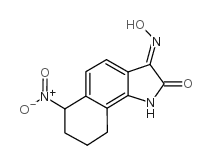Acute and late effects on induction of allodynia by acromelic acid, a mushroom poison related structurally to kainic acid.
Toshiaki Minami, Shinji Matsumura, Mikio Nishizawa, Yasuyuki Sasaguri, Nobuyuki Hamanaka, Seiji Ito
Index: Br. J. Pharmacol. 142(4) , 679-88, (2004)
Full Text: HTML
Abstract
1. Ingestion of a poisonous mushroom Clitocybe acromelalga is known to cause severe tactile pain (allodynia) in the extremities for a month and acromelic acid (ACRO), a kainate analogue isolated from the mushroom, produces selective damage of interneurons of the rat lower spinal cord when injected either systemically or intrathecally. Since ACRO has two isomers, ACRO-A and ACRO-B, here we examined their acute and late effects on induction of allodynia. 2. Intrathecal administration of ACRO-A and ACRO-B provoked marked allodynia by the first stimulus 5 min after injection, which lasted over the 50-min experimental period. Dose-dependency of the acute effect of ACRO-A on induction of allodynia showed a bell-shaped pattern from 50 ag x kg(-1) to 0.5 pg x kg(-1) and the maximum effect was observed at 50 fg x kg(-1). On the other hand, ACRO-B induced allodynia in a dose-dependent manner from 50 pg x kg(-1) to 50 ng x kg(-1). 3. N-methyl-d-aspartate (NMDA) receptor antagonists and Joro spider toxin, a Ca(2+)-permeable AMPA receptor antagonist, inhibited the allodynia induced by ACRO-A, but not by ACRO-B. However, other AMPA/kainate antagonists did not affect the allodynia induced by ACRO. 4. Whereas no neuronal damage was observed in the spinal cord in ACRO-A-treated mice, induction of allodynia by ACRO-A (50 fg x kg(-1)) and ACRO-B (50 ng x kg(-1)) was selectively lost 1 week after i.t. injection of a sublethal dose of ACRO-A (50 ng x kg(-1)) or ACRO-B (250 ng x kg(-1)). Higher doses of ACRO-A, however, could evoke allodynia dose-dependently from 50 pg x kg(-1) to 500 ng x kg(-1) in the ACRO-A-treated mice. The allodynia induced by ACRO-A (500 ng x kg(-1)) was not inhibited by Joro spider toxin or NMDA receptor antagonists. These properties of the late allodynia induced by ACRO-A were quite similar to those of the acute allodynia induced by ACRO-B. 5. ACRO-A could increase [Ca(2+)](i) in the deeper laminae, rather than in the superficial laminae, of the spinal cord. This increase was not blocked by the AMPA-preferring antagonist GYKI52466 and Joro spider toxin. 6. Taken together, these results demonstrate the stereospecificity of ACRO for the induction of allodynia and suggest the presence of a receptor specific to ACRO.
Related Compounds
| Structure | Name/CAS No. | Molecular Formula | Articles |
|---|---|---|---|
 |
NS-102
CAS:136623-01-3 |
C12H11N3O4 |
|
Selective block of recombinant glur6 receptors by NS-102, a ...
1994-09-15 [Eur. J. Pharmacol. 269 , 43, (1994)] |
|
A novel non-NMDA receptor antagonist shows selective displac...
1993-08-15 [Eur. J. Pharmacol. 246 , 195, (1993)] |
|
Kainate receptor-mediated inhibition of presynaptic Ca2+ inf...
1998-06-15 [J. Physiol. 509 ( Pt 3) , 833-45, (1998)] |
|
Selective reduction in domoic acid toxicity in vivo by a nov...
1996-09-01 [Can. J. Physiol. Pharmacol. 74(9) , 1047-54, (1996)] |
|
Glutamate receptor agonist kainate enhances primary dendrite...
2006-05-01 [J. Neurosci. Res. 83(6) , 944-56, (2006)] |